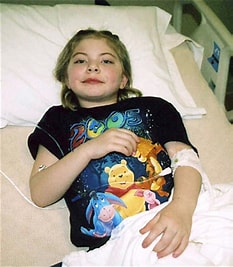Juvenile Myositis
About Juvenile Myositis

Juvenile Myositis (JM), a condition that affects children under the age of 18
is characterized by muscle weakness and skin rashes. The most common form of JM is Juvenile Dermatomyositis (JDM), which is not linked to cancer like adult forms of the disease. Juvenile Polymyositis and Necrotizing Myopathy in children are rare, and IBM is not seen in juveniles.
Children may have more than one autoimmune disease or overlapping conditions. JDM typically begins with a skin rash, which can be red and patchy, or appear like dry skin, red or purplish on the eyelids or cheeks, or both. JDM patients can experience weak muscles simultaneously with skin rashes or after a delay of days, weeks, or months. Weak muscles are usually those near the body, such as the neck, shoulders, back, and hips, and the child may have trouble climbing or rising from a seated position. The skin rash and muscle weakness are caused by inflammation in the blood vessels under the skin and in the muscles. Other symptoms of JDM may include falling, weaker voice, difficulty swallowing, pain in the muscles, and hardened lumps or sheets of calcium under the skin. Contractures, which cause the muscle to shorten and the joint to remain flexed, can also occur but can be prevented by exercising the muscles and maintaining joint range of motion.
What are symptoms of Juvenile Myositis?
Polymyositis is a rare autoimmune disease that affects the skeletal muscles, causing inflammation and progressive muscle weakness. The symptoms of polymyositis can vary widely, but some common ones include:
- Muscle weakness: This is the most common symptom of dermatomyositis and can affect any muscle group, but usually affects the proximal muscles (hips, shoulders, neck).
- Skin rash: A characteristic rash on the face, chest, back, hands, and/or elbows is a common symptom of dermatomyositis. The rash often appears before the muscle weakness.
- Difficulty swallowing: This can occur if the muscles responsible for swallowing are affected.
- Fatigue: Many people with dermatomyositis experience extreme fatigue and weakness, even with minimal activity.
- Joint pain: Joint pain and stiffness may be present, especially in the morning.
- Shortness of breath: This can occur if the muscles responsible for breathing are affected.
- Raynaud's phenomenon: This is a condition in which the fingers or toes turn white or blue in response to cold or stress.
